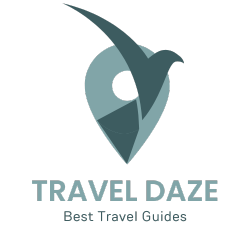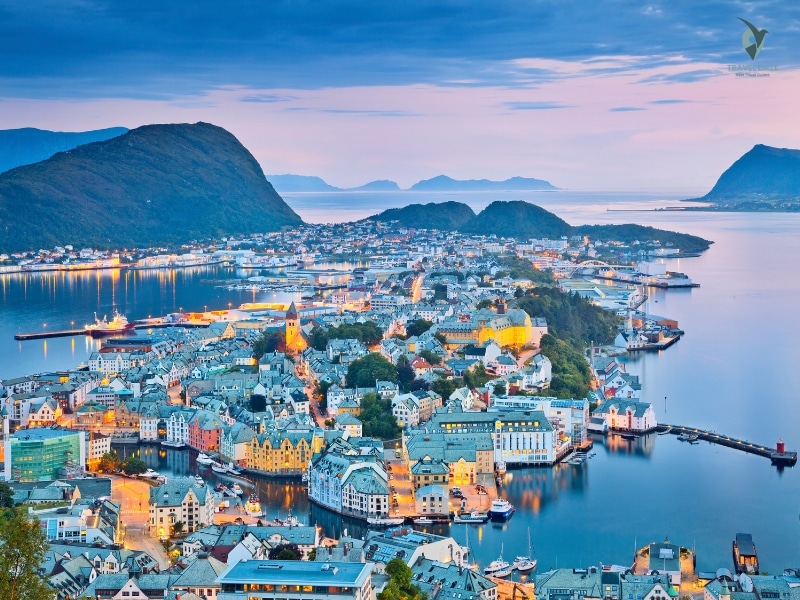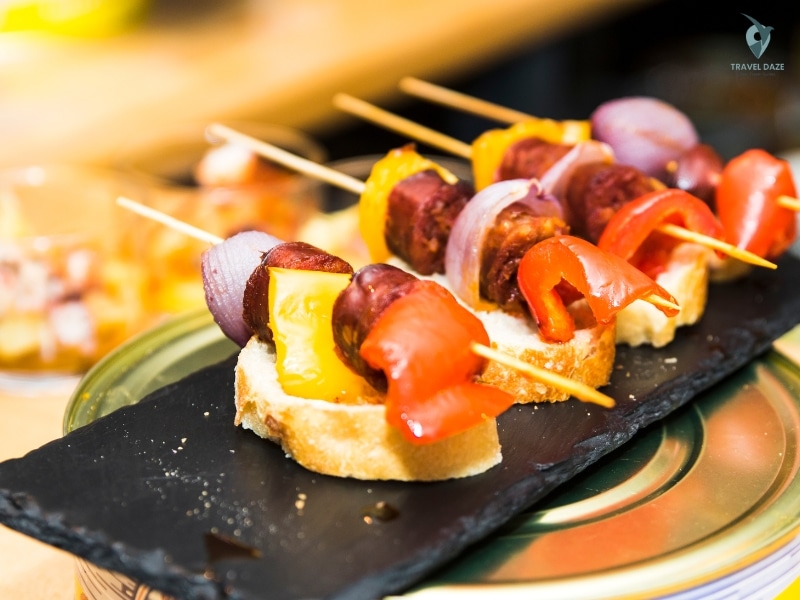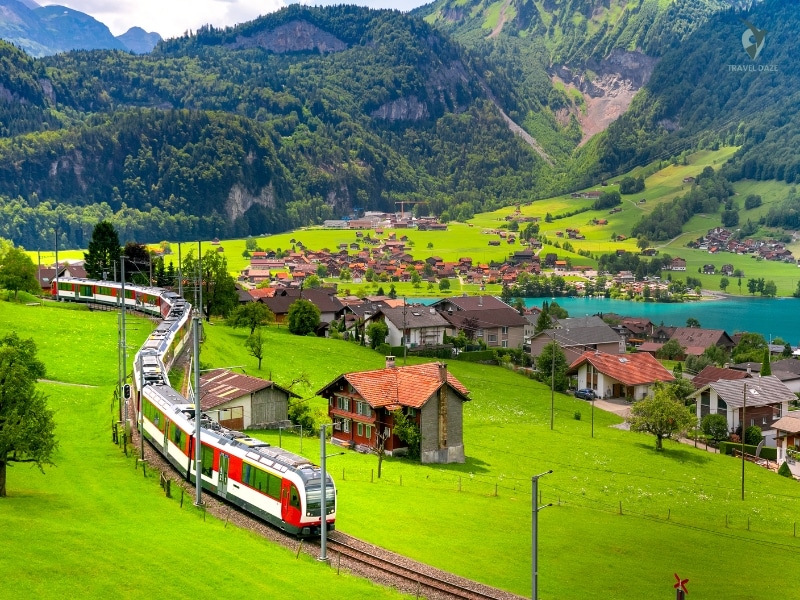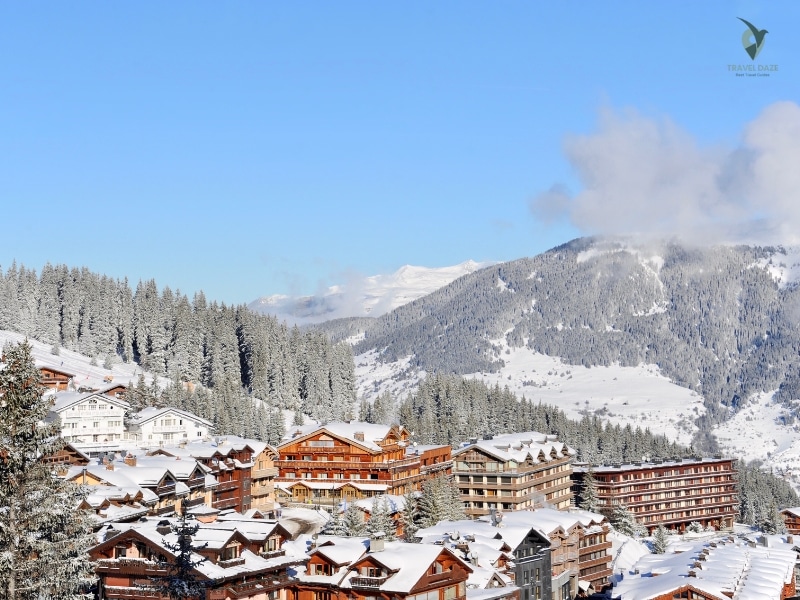I will always remember the first time I drove through the beautiful landscapes of Norway. From tall fjords to lovely coastal villages, every turn felt like a picture coming to life. If you want a blend of freedom and natural beauty, this is the perfect spot.
Table of Contents
ToggleNo matter if you’re travelling alone or with friends, Norway’s routes are very easy to access. I found beautiful places during my journey, such as the stunning Lofoten Islands and the peaceful Geirangerfjord. Believe me, you’ll feel like packing your bags after you read this.
Main Points
- Norway provides a wonderful mix of freedom and stunning scenery.
- Places like Lofoten and Geirangerfjord are essential to visit.
- Scenic drives are perfect for both solo travellers and groups.
- Find unique places and useful advice for your trip.
- Plan your trip with assurance by following detailed advice.
Reasons to Choose Norway for Your Road Trip
Driving on the open road in Norway feels truly special. The 18 National Scenic Routes in the country highlight its beautiful landscapes. From high mountains to calm fjords, each drive is a fresh adventure.

Stunning views around every corner
The views in Norway are incredible. I have driven on coastal roads where the ocean shone brightly under the midnight sun. I have seen groups of reindeer while travelling the Varanger route in the mountains. The variety of views makes each mile interesting.
One of my favourite moments was when I stopped at a hidden waterfall I found along the way. Being able to discover these treasures is what makes a road trip here truly unique. Public transport is not as good—it’s limited and often needs ferries.
Explore at your own pace.
Driving in Norway allows you to fully manage your trip. You can park at the trailheads for a quick hike or camp under the stars whenever you feel like it. The right to roam policy promotes a feeling of adventure.
Norway’s roads are open and peaceful, unlike the crowded destinations in Europe. I’ve spent a lot of time taking photos at my favourite places without having to think about tour schedules. Summer brings 24-hour daylight, which offers even more flexibility.
No matter if you’re looking for coastal views or mountain drives, Norway’s roads provide endless options. This is the ideal spot to start your own journey.
Preparing for Your Road Trip in Norway
Planning a trip through Norway’s landscapes takes some thought, but it’s definitely worth it. Choosing the right season and selecting the perfect vehicle can make a big difference with some preparation. Here’s how to make your trip easy and memorable.
The best time to visit for pleasant weather.
When it comes to enjoying Norway’s weather, timing is key. Summer, which lasts from June to August, is perfect for enjoying long days beneath the midnight sun. I went in June and really enjoyed the long hours of daylight for exploring. September is a time when there are fewer people around and prices are lower, even though the days are getting shorter.
Winter trips are enchanting, but they need a bit more planning. Studded tyres are required for driving on snowy roads, and there are fewer hours of daylight. Coastal areas are usually warmer, while inland regions can be chillier. Make sure to look at the weather forecast and pack what you need based on that.
Choosing the Right Rental Car
Choosing the right car is important for an enjoyable trip. I suggest small, fuel-efficient cars for driving on tight roads and saving money on petrol. Having unlimited mileage is essential because the distances can be very large. Auto Europe is my preferred rental company because they are dependable and clear about their prices.
People travelling in winter should make sure their vehicle is equipped with studded tyres. Many rental companies offer toll billing, so it’s a good idea to check this before you make a reservation. I saved money by booking my car three months ahead of time, so it’s a good idea to plan early to get the best prices.
- Look at June and September to see how they compare in terms of weather and cost.
- Make sure to look at ferry schedules, particularly in coastal regions.
- Get offline maps for places with weak cell service.
- Reserve your rental car in advance to save money and ensure you get what you need.
Important Advice for Driving in Norway
Travelling through Norway’s paths needs both planning and flexibility. Knowing how toll roads and ferries work helps make your trip easier. Winter weather makes driving more challenging, but with the right information, you can feel sure and safe on the road.
Using Toll Roads and Ferries
Norway has a simple toll system called AutoPASS. If you drive a car with foreign plates, you will get a bill in the mail. Most rental companies include toll billing in their fees. I suggest you download the EasyPark app for easy parking payments.
Ferries are often used during trips, particularly on coastal paths. Make sure to get there at least 15 minutes early to hold your place. Make sure to have a card on hand because that is how most transactions take place. I think ferries are a wonderful way to take a break from long drives and appreciate the views.
Safe Driving in Winter Weather
Driving in Norway during winter requires careful attention. I always make sure to have studded tyres and a winter survival kit ready. This has a shovel, blankets, and extra food. Reflective road markers help keep you safe during snowstorms by guiding you when visibility is low.
I will always remember my first slide on icy roads. It showed me how important it is to brake gently and keep a steady speed. Practising driving in the snow in a safe place before your trip can really help. Always keep your headlights on, even when it’s daytime.
- Keep emergency contact numbers handy, including 112 for urgent situations.
- If you often get motion sickness on ferries, try using sea bands.
- Regularly remove ice from your car to keep your view clear.
These tips will help you navigate Norway’s roads and make the most of your adventure.
Beautiful Scenic Routes for Your Travel Plans
Driving along Norway’s beautiful roads is like being in a nature documentary. Each turn shows stunning views, from impressive coastlines to high mountains. Two routes are essential to see: The Atlantic Ocean Road has the hairpin turns of Trollstigen. Each provides a special experience. The Hairpin Turns of Trollstigen.
The Atlantic Ocean Road
This impressive engineering feat is known as the “world’s most beautiful drive”. It spans 8.3 kilometres and links islands through bridges and causeways. The excitement is genuine—the views of the Atlantic Ocean are stunning. However, don’t anticipate being alone; summer crowds can be quite large.
To find the best photo spots, go in the early morning or late evening. The light feels enchanting, and there are fewer people around. As you travel, you’ll come across spots that are great for taking pictures of the rough coastline. Camping spots close by allow you to stay longer and enjoy the beauty around you.
Trollstigen’s Hairpin Turns
This famous road is exciting for every driver. It has an 11% slope and 11 sharp curves, making it challenging for those who aren’t brave. The reward is definitely worth it—beautiful views of waterfalls and valleys. The view from the top provides a wide look at the nearby mountains.
Take your time and appreciate the ride. You can only use the road in summer, so make sure to plan ahead. Early mornings are the best time to steer clear of traffic. Pair this with a trip to the nearby Geirangerfjord for a complete day of excitement.
- Experience the stunning beauty of the Atlantic Ocean Road during sunrise or sunset.
- Drive carefully on the turns of Trollstigen to ensure a safe and pleasant experience.
- Set up camp close by to truly enjoy these famous trails.
Top Road Trips in Norway
Driving through Norway’s varied landscapes is a unique experience. No matter if you are attracted to the stunning fjords of Western Norway or the beautiful sights of the Arctic in the north, every area has its own special appeal. Here’s how to get the best out of your journey.

Routes Filled with Fjords in Western Norway
Western Norway is a dream destination for those who love fjords. High cliffs and crystal-clear waters surround you as you begin in Bergen. I found hidden paths to secluded fjords that felt like my own personal getaways. These places are great for a peaceful picnic or a quick swim.
When planning a road trip itinerary, think about looking at both 7-day and 14-day options. A shorter trip highlights places like Geirangerfjord, while a longer journey allows you to discover hidden treasures. Make sure to gather your supplies, since petrol stations can be quite far apart in rural areas.
Adventures in the Arctic of Northern Norway
Northern Norway is a unique place. Tromsø and Bodø are great places to begin your Arctic adventures. I will always remember chasing the northern lights beneath the starry sky. Winter trips need important gear such as thermal layers and snow boots, but the experience is rewarding.
Summer offers the midnight sun, ideal for hiking or watching whales. Consider including Sami cultural stops in your itinerary to connect more deeply with the region. No matter if you come in summer or winter, Northern Norway offers amazing experiences.
- Look at 7-day and 14-day itineraries to find what fits your schedule best.
- Find hidden spots to access the fjords for a more intimate experience.
- Select either Tromsø or Bodø to begin your Arctic adventures.
- Bring important Arctic clothing for winter trips, like thermal layers.
- Schedule your journey to see the midnight sun or the northern lights for special experiences.
Important Places to Visit on Your Journey
Every trip through Norway’s landscapes feels like discovering a new treasure. From flowing waterfalls to old cabins, every stop has something memorable to offer. Whether you love nature or enjoy history, these places will amaze you.
Views of Geirangerfjord, a UNESCO site
Geirangerfjord feels like it comes from a different world. The Seven Sisters waterfall is a standout feature, with its seven streams flowing into the fjord. To get the best photo angles, go in the early morning when the light shines on the water perfectly.
If you want to go for a walk, the Skagefla trail has beautiful views and a touch of adventure. It’s a valuable find that makes the effort worthwhile. Be ready for some steep parts and make sure to wear strong shoes.
The Famous Red Cabins of Lofoten
The rorbuer cabins in Lofoten are truly beautiful. The red fishing huts have a fascinating history and are now well-liked places to stay. It’s important to book early, especially during busy times of the year. I once missed out on a cabin and had to camp nearby. It was still a great experience, but I suggest booking your spot ahead of time.
For a special experience, consider overnight kayaking. It’s a calm way to enjoy the beauty of the area. If you visit during the off-season, you will experience fewer crowds and have a closer connection to the beautiful scenery all around you.
- Take photos of Geirangerfjord at sunrise to capture its beauty.
- Discover quiet paths such as Skagefla for a more peaceful adventure.
- Reserve rorbuer cabins in advance to prevent any last-minute stress.
- Be mindful of fishing village customs—try to keep noise down.
- Bring important items such as warm clothing and strong shoes for hiking.
How to Use Your Time Wisely
To fully enjoy your time exploring Norway’s landscapes, it’s important to find a good balance. Driving can be thrilling, but it’s also important to take breaks and explore along the way. I’ve discovered that preparing in advance and staying adaptable can really change things for the better.
Finding the Right Mix of Driving and Exploring
During my first trip, I overloaded my schedule for one day. I became very tired and missed some amazing places to see. I now try to drive for no more than 4 to 5 hours each day. This allows for lots of time to make unexpected stops and enjoy activities.
Grouping activities along your path is an excellent way to save time. For instance, you can mix a walk with a picnic or explore nearby attractions in the same area. Always include a 2-hour buffer for any unexpected delays or additional exploration. The weather can change fast, so it’s important to have a backup plan.
Essential Items to Pack for Your Trip
Smart packing is essential for making the most of your time. I once packed too much and wasted a lot of time searching through my suitcase. Use a layering system for your clothes; it’s flexible and helps you save space. Remember to pack emergency food supplies for the long distances between towns.
Gear that serves multiple purposes, such as a scarf that can also be used as a blanket, is incredibly helpful. Charge your devices whenever possible, since charging stations may not be easy to find. A local SIM card keeps you connected for navigation and emergencies. Also, remember to include useful items like a portable laundry bag and quick meal ideas for eating on the go.
- Try to drive for 4 to 5 hours each day to keep a good balance.
- Group activities together to save time and effort.
- Wear layers of clothing to adjust to the changing weather.
- Bring emergency food supplies and versatile gear.
- Make a plan for where to stop and charge, and think about getting a local SIM card.
Affordable Road Trip Tips
Discovering Norway without spending too much doesn’t mean you have to miss its stunning sights. By making some wise decisions, you can experience beautiful scenery without spending too much money. Here are some ways to keep your trip budget-friendly, from budget places to stay to inexpensive meals.
Cutting Costs on Lodging and Meals
A simple way to save money is by taking advantage of Norway’s Right to Roam policy, called allemannsretten. You can camp in many public places for free, as long as you respect nature and private property. I’ve discovered some amazing places for stealth camping, far from busy campsites.
Discount supermarket chains such as Rema 1000 and Kiwi are very helpful for meals. Gather your basic supplies and cook your own meals. Many hostels and campsites provide shared kitchens, which are great for cooking affordably. Remember to look for wild berries—just make sure to follow local guidelines to pick them safely.
Exploring Norway’s Right to Roam Policy
Norway’s Right to Roam policy is a big advantage for budget travellers. You can discover the country’s natural beauty without breaking the bank on places to stay. There are limits to consider. Camping is not allowed on farmland or near private residences.

Most city centres and popular tourist areas have public toilets, which helps you plan your stops more easily. If you are driving, use apps that track fuel prices to discover the most affordable parking and refuelling choices. There are many picnic spots available, so bring a lunch and enjoy the scenery without any extra cost.
- Camp safely and respectfully following the Right to Roam policy.
- Visit discount supermarkets such as Rema 1000 for budget-friendly meals.
- Take advantage of shared kitchens at hostels or campsites to reduce your food expenses.
- Look for wild berries while following local rules.
- Arrange your stops near public restrooms and places for picnics.
Exploring Norway’s National Scenic Routes by Car
Norway’s National Scenic Routes are a wonderful blend of nature and engineering. These 18 special roads are made to highlight the country’s most beautiful scenery. Every route, from coastal cliffs to rugged mountain passes, has its own unique charm.
Key Features of the 18 Designated Routes
One of my favourites is the Varanger Route, famous for its landscapes that resemble the moon. Senja, known as “Norway in miniature”, is a dream destination for photographers. The Hardanger Route is ideal for spring, as its fruit orchards are in full bloom. Every drive has its unique appeal and time of year.
Meeting wildlife happens often. I saw reindeer eating by the road on the Varanger Route. When taking photos, bring a wide-angle lens and a tripod to capture the beautiful scenery. Get ready for changes in elevation, particularly on mountain roads such as Trollstigen.
Reasons to Take a Detour on These Roads
Circular routes are an excellent way to enhance your experience. You can explore more without having to go back. Rest stops are clearly indicated and offer amenities such as picnic areas and scenic viewpoints. Apps such as “Norway Scenic Routes” are useful for planning and finding your way.
Coastal drives give you calm ocean views, and mountain routes show off stunning landscapes. Consider having themed days, such as ones dedicated to waterfalls or historic sites. These routes are not just paths to a place; they are the destination themselves.
Driving Through Norway’s Fjords
Driving next to Norway’s fjords feels like stepping into a world of endless blue and green. The tall cliffs and clear water make a scene that is calm and amazing. The fjords provide many opportunities for adventure, whether you’re visiting viewpoints or adding a boat tour to your drive.
Must-See Viewpoints and Activities
A highlight for me was a hidden viewpoint that looked out over Geirangerfjord. The coordinates (62.1011° N, 7.2060° E) took me to a place where I could see the Seven Sisters waterfall at its best. Early mornings are perfect for enjoying the best views without the crowds.
I decided to take the Geiranger-Skjeldal ferry for a different view. The still water and the cliffs around us made the ride memorable. If you’re up for something more active, kayak rentals in Nærøyfjord let you explore at your own pace. Make sure to pack waterproof gear because the water in the fjord can be cold!
Driving and Boat Tours Together
Boat tours are a great addition to your drive. I discovered ticket packages that offered both ferry rides and guided safaris. These tours often showcase unique places, such as spots for underwater photography or saunas by the fjords. Visiting at the right time with the tides can make your experience even better.
If you are planning a longer trip, think about an itinerary that goes from the fjord to the mountains. The calm water and rough mountains create a stunning view. The eastern fjords, such as Hardangerfjord, provide a calmer option compared to the busier western routes.
- Explore hidden viewpoints for a more intimate experience.
- Look at ferry and kayak tours to see the different views they offer.
- Search for combo ticket deals to save both time and money.
- Bring waterproof gear and look at the tidal times.
- Visit saunas by the fjord for a calming getaway.
Hunting for the Northern Lights on Your Road Trip
The first time I saw the aurora borealis, it felt like magic spread across the sky. The northern lights in Norway are a beautiful natural phenomenon that attracts visitors from all over the globe. This experience is unforgettable, whether you are an experienced photographer or seeing it for the first time.
Top Areas to See the Aurora
Tromsø is a well-known place for seeing the northern lights. Being situated above the Arctic Circle makes it perfect for clear night skies. I have also found success in Lofoten, where the lights reflect off the ocean, creating a dreamlike effect.
If you want to avoid crowds, consider visiting Alta or Kirkenes. These areas provide beautiful views while also being quieter. Timing is important—plan your visit from September to March for the best opportunities. The Aurora Forecast app is an essential tool for monitoring activity and organising your schedule.
Advice for Capturing the Lights
To capture the northern lights, you need to be patient and have the right equipment. Choose a DSLR camera and set it to manual for taking long exposure shots. A tripod is important for keeping your shots steady. I suggest using a heated tripod when it’s cold outside to avoid freezing.
Composition is important—add a foreground element such as a tree or cabin to create depth. Try different time-lapse intervals to see how the lights move. Remember to savour the moment; often, the best memories are those you don’t capture in photos.
- Look at the moon phases—new moons provide darker skies, which help with visibility.
- Take advantage of aurora alert services to get updates in real time.
- Dress in layers and bring hot chocolate to keep warm while waiting for a long time.
- Check light pollution maps to locate the darkest areas.
- Look at the results from both the camera and the phone to find out which one suits your needs better.
Camping and Parking in Norway
Discovering the ideal place to camp beneath Norway’s vast skies is an adventure all on its own. The Right to Roam policy in the country helps you find hidden gems, but figuring out where to park and set up camp is important. By preparing a bit, you can experience the joy of wild camping while being mindful of the environment.
Finding Free Camping Spots
In Norway, you can camp for free in many public areas thanks to the Right to Roam, as long as you stick to the rules. Search for level areas that are shielded from the weather and not on private land. Community-shared maps are a helpful tool for finding these areas. Make sure to look for a 48-hour camping limit and steer clear of fire hazards to follow local laws.
Proper trash disposal is important—make sure to take out everything you bring in. Be careful of unexpected fees when camping in restricted areas, so it’s a good idea to check the rules first. Using noise reduction methods, such as picking quieter times to set up camp, helps keep the peace for everyone.
Using parking apps for ease
In Norway, parking is simpler thanks to apps such as Parklink and EasyPark. These tools assist you in locating available parking and making payments easily. It’s a good idea to set up the app before your trip to prevent any last-minute stress. Penalty fees can increase fast, so make sure to check your parking choices and how long you will be parked.
The rules for campervans are a bit different from those for tents. Please park only in the areas marked for parking to prevent any fines. Many myths about bear safety exist, but in Norway, the emphasis is on respecting nature and wildlife. Some preparation can really help make things go well.
- Find free camping spots using maps shared by the community.
- Get parking apps such as Parklink or EasyPark to make things easier.
- Make sure to follow the trash disposal rules and take everything with you.
- Look into the 48-hour camping limits and the rules for fire safety.
- Use noise reduction methods to keep the environment calm.
Driving in Norway during winter is a beautiful experience.
Driving through Norway’s winter landscapes feels like entering a magical, icy storybook. The roads covered in snow and the icy views are beautiful, but they bring their own challenges. Getting ready is important for fully enjoying this wonderful experience.
What to Anticipate on Snowy Roads
Driving in Norway during winter can be uncertain. I have experienced whiteout conditions where I couldn’t see anything at all in just a few seconds. Studded tyres are required, and I always keep tyre chains with me for added grip. Road closures often happen when there is heavy snowfall, so be sure to check local updates before you go out.
In winter, there is less daylight, so make sure to plan your time carefully. I like to drive when it’s brightest to stay away from icy spots that can form at night. Local phrases such as “glattkjøring” (slippery driving) remind us to proceed carefully and steadily.
Important Gear for Winter Driving
Bringing the right equipment can really change things. This is what I always take with me:
- Emergency thermal blankets provide warmth in case of breakdowns.
- A survival kit for -25°C that includes food, water, and first aid supplies.
- Insulate windows to stop frost from forming.
- Diesel anti-gel additives help your car run well.
- Nuts and chocolate are great snacks for a quick energy boost.
Preventing frostbite is very important. Dress in layers and have hand warmers available. When I compare winter and summer routes, I notice that winter drives need more preparation, but they provide incredible beauty.
Mixing road trips with famous hikes
As I stood at the edge of Preikestolen, it felt like I was on top of the world. The trails in Norway offer more than just hiking; they provide unforgettable adventures that go hand in hand with a road trip. Whether you’re climbing Trolltunga or enjoying the beautiful views from Romsdalseggen, these trails provide a special way to see the country’s natural beauty.
Preikestolen and Trolltunga hiking paths
Preikestolen, also known as Pulpit Rock, is a place you really should visit. I suggest getting up early to see the sunrise—it’s definitely worth it. The hike lasts around 4 hours for the whole trip, and the views from the top are amazing. Trolltunga is a tougher hike that takes about 10 to 12 hours to complete. A shuttle service can help you save time and energy, particularly when you’re in a hurry.
Both trails need strong shoes. Make sure to wear your shoes a bit before the hike to prevent blisters. Guided tours are an option, but I enjoy solo hikes because they give me more freedom. Be ready for changing weather, particularly during the off-season.
The Beautiful Views of Romsdalseggen
Romsdalseggen is a true treasure. The path provides wide views of the mountains and valleys beneath. It has some technical parts with via ferrata sections, but the hard work is worth it. Finding parking at the trailhead can be difficult, so it’s best to get there early to find a space.
Altitude sickness is uncommon here, but it’s important to drink plenty of water and rest when necessary. Rescue insurance is a wise choice, just in case you need it. After the walk, I enjoy unwinding with a warm drink and stretching to help my body recover.
- Look into the permit requirements for specific trails.
- Watch out for off-season hazards such as slippery walkways.
- Look at guided hikes and solo hikes based on how experienced you are.
- Make sure to wear in your shoes before going on long hikes.
- Keep an emergency whistle with you for safety.
Planning Your Ideal Norway Road Trip Itinerary
Creating the ideal plan for Norway’s beautiful drives is both fun and fulfilling. Whether you’re planning a 10-day adventure or tailoring your trip to your personalising your journey according to your interests, most of your time. Here’s how to create a journey that suits your style.
Example 10-Day Itinerary for Ideas
Begin your adventure in Bergen, the entrance to Norway’s fjords. Head north to Ålesund, taking breaks at famous places such as Geirangerfjord and Trollstigen. This loop features beautiful coastal views, mountain passes, and lovely towns. Set aside time for unexpected stops—some of the greatest experiences occur away from the planned path.
To keep a good pace, try to drive for 4-5 hours each day. This provides a lot of time for exploration. Utilise a spreadsheet template to monitor distances, places to stay, and activities. Change your schedule if necessary to fit in with the weather or any surprises that come up.
Customising Your Trip Based on Interests
Customise your travel plans to reflect what you love. If you love photography, pay attention to beautiful spots like Preikestolen and the Atlantic Ocean Road. For hikers, add trails such as Trolltunga and Romsdalseggen. Families may like shorter trips with stops that are good for kids, while solo travellers can enjoy longer days that are more flexible.
Think about including local festivals or events in your plan. Look at charging station maps if you are driving an electric vehicle. Pet owners should look into places that welcome pets and check their rules. A carefully chosen road trip playlist can make the journey more fun.
- Organise your road trip itinerary with a spreadsheet template.
- Find a good balance between driving and exploring by adjusting your speed.
- Choose activities that match your interests, such as photography or hiking.
- Look at festival calendars for special experiences.
- Make a plan for the rules of travelling with pets if you are bringing your furry friends.
- Make a playlist for your road trip to keep things fun.
- Hire local guides for expert insights.
- Look at the differences between travelling with family and travelling alone.
- Have a plan for refunds when cancellations occur.
Using these tips, you can make a road trip plan that reflects your personal interests. No matter if you’re exploring fjords, hiking trails, or enjoying cultural experiences, Norway’s beautiful routes provide countless opportunities for adventure.
Begin your journey on Norway’s roads today.
As soon as I turned the key and began my first trip through Norway, I realised it would be a memorable experience. You can explore at your own speed, enjoying stunning views at every turn—it’s truly a unique experience. If you’ve been unsure, I want to say that the reward is definitely worth it.
If you’re new to this, I suggest beginning with the Atlantic Ocean Road or Geirangerfjord. These routes are well-known and provide beautiful views along with easy driving conditions. Make sure to download my free checklist so you can be fully prepared.
Right now, there are seasonal discounts, so it’s a great time to plan your trip. No matter if you’re travelling alone or with someone special, Norway’s roads are ready for you. Gather your important items, take your map, and prepare for an unforgettable journey.
What are you waiting for? Begin your journey today and explore the beauty of Norway’s scenery. The open road is inviting—will you respond?
FAQ
What makes Norway a fantastic place for driving adventures?
Every turn presents stunning views, from high mountains to calm fjords. You can also explore at your own speed, which makes it very flexible.
What is the ideal time to visit for pleasant weather?
Summer, which lasts from June to August, is perfect for enjoying warm days and extended daylight hours. If you want to see the Northern Lights, the best time is winter, from November to February.
What should I consider when selecting a rental car?
Choose something that is comfortable and dependable, especially when driving on mountain roads. A 4×4 is useful in winter, while a regular car is sufficient in summer.
What do I need to understand about toll roads and ferries?
Most tolls are automatic, so make sure to see if your rental car has an AutoPASS. Ferries are popular and simple to use—just look for the signs and pay on the boat.
What is it like to drive in winter conditions?
Snowy roads can be difficult, so drive carefully and use winter tyres. Make sure to look at the weather and road conditions before you leave.
What are some scenic routes that I should definitely see?
The Atlantic Ocean Road is beautiful, and the sharp turns of Trollstigen are memorable. Both provide amazing views and many chances for photos.
Where can I take a break on my journey?
It is imperative to see the UNESCO-recognized views of Geirangerfjord, and the red fishing cabins in Lofoten are well-known. Both places are worth the extra trip.
What are some ways to balance driving and exploring?
Schedule shorter drives each day to allow time for hiking, taking photos, or simply enjoying the views. Take your time—it’s all about the experience.
Do you have any advice for saving money while travelling?
Take advantage of Norway’s Right to Roam policy for free camping, and buy groceries instead of dining out. It’s a wonderful method to make the most of your budget.
What makes Norway’s National Scenic Routes unique?
These 18 routes highlight the country’s most beautiful landscapes. Consider perspectives, art displays, and memorable journeys.
What are some ways to explore fjords while driving?
Visit viewpoints such as Stegastein or enjoy a boat tour in Geirangerfjord. It’s a great way to see the fjords from various perspectives.
What is the best location to view the Northern Lights?
Visit Northern Norway, particularly Tromsø or the Lofoten Islands. Clear, dark skies are important, so be sure to check the aurora forecast.
Is it possible to camp for free in Norway?
Absolutely! The Right to Roam law allows you to camp in many places, provided you are respectful and clean up after yourself. Avoid private property.
What is winter driving like in Norway?
Be prepared for snowy and icy roads, but they are kept in good condition. Bring warm clothes, a shovel, and an emergency kit just in case.
Is it possible to drive and walk at the same time?
Definitely! Trails such as Preikestolen and Trolltunga can be reached easily by car. Simply park close by and start your walk for amazing views.
What steps should I take to create a 10-day itinerary?
Begin in Bergen, travel through the fjords, and finish in Lofoten. Make it your own according to what you enjoy—be it hiking, photography, or simply unwinding.
